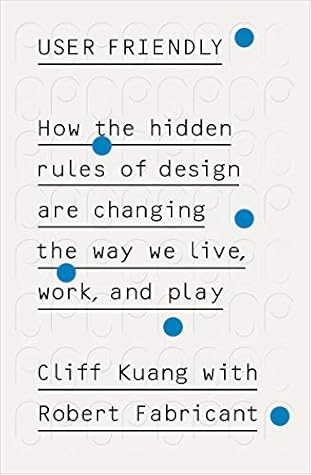More on this book
Community
Kindle Notes & Highlights
by
Cliff Kuang
Read between
April 9 - May 19, 2022
Technology should become simpler over time. Then it should become simpler still, so that it disappears from notice.
In the era before user experience came to define digital life in the twenty-first century, Norman was the Moses of product design: In 1988, he published perhaps the only mainstream bestseller about the field, The Design of Everyday Things, which documented all the ways in which the fodder of everyday life failed us, from door handles to thermostats.
Those examples and others made Norman “realize that there wasn’t any understanding of technology combined with psychology. We were building technology for people, but the technologists didn’t understand people.”
You have to know why people behave as they do—and design around their foibles and limitations, rather than some ideal.
The investigators who descended upon TMI in the wake of the accident reported that there were fourteen different meanings for red, and eleven for green.
Feedback that works surrounds us every day, so we rarely think about it. It’s feedback that defines how a product behaves in response to what you want. It’s feedback that allows designers to communicate to their users in a language without words. Feedback is the keystone of the user-friendly world.
The natural world is filled with feedback; in the man-made world, that feedback has to be designed.
There may be no greater design challenge for the twenty-first century than creating better, tighter feedback loops in places where they don’t exist, be they in the environment, health care, or government.
Mental models are nothing more and nothing less than the intuitions we have about how something works—how its pieces and functions fit together.
For me, the strangest was when my wife told me that her psychologist had said that the secret to having a productive argument with your spouse is to listen to what she has to say, repeat what you just heard, then finally have your spouse confirm that’s what she meant.
Seeing humans as they are, instead of as they’re supposed to be, was one of the great, unappreciated intellectual shifts of the twentieth century.
User-friendliness is simply the fit between the objects around us and the ways we behave.
All the nuances of designing new products can be reduced to one of two basic strategies: either finding what causes us pain and trying to eliminate it, or reinforcing what we already do with a new object that makes it so easy it becomes second nature. The truest material for making new things isn’t aluminum or carbon fiber. It’s behavior.
The secret is that we come to trust machines only if they mimic the way we come to trust other people.
No man creates a new language for himself, at least if he be a wise man. —Justice Joseph Story, in a Supreme Court ruling that created modern American patent law
She knew where the internet lived on her phone, sort of. She could imagine that the internet might help her find jobs, or help her get formal documentation as a citizen, to receive government services. But she assumed that the internet wasn’t for her, that it was for the better educated. And part of the reason was that she couldn’t picture how it worked. She had no mental model of what it held. She could recognize the globe icon on her phone, but she had no idea what it meant. She guessed that it led “to the outside world.”
Metaphors will always be one of our most powerful entry points to the user-friendly world, possessing the singular ability to make the foreign feel familiar, providing us mental models for how things work.
he began to realize that the best students didn’t demonstrate creativity in solving a problem so much as in finding the problem.
The most important problems to solve were those that weren’t being expressed. The most important questions to ask were those that people never thought to ask themselves.
But the most critical piece of the history will be this: Disability is so often an engine of innovation, simply because humans will invent ways to satisfy their needs, no matter their limitations.
So-called variable rewards pop up most obviously in casinos, and in the design of slot machines, on which Americans spend more money than movies, baseball, and theme parks combined.
The most enduring businesses in the world have always been built upon addiction—alcohol, tobacco, drugs. The trick of the user-friendly world is that not only are we addicted, the drug doesn’t have to be bought. The drug lies in our own brains, hardwired there by evolution.
I didn’t find any good answers, not in the data about who voted for Clinton or Trump, and not in any of the stories I read about that data. They rang hollow because they didn’t reveal what to do about any of it. Then I read an essay by the writer Max Read, “Donald Trump Won Because of Facebook.”
This idea was summarized by Elizabeth Kolbert in a review of The Knowledge Illusion: Why We Never Think Alone, by Steven Sloman and Philip Fernbach: “This borderlessness, or, if you prefer, confusion, is also crucial to what we consider progress. As people invented new tools for new ways of living, they simultaneously created new realms of ignorance;
This led to the popularization of Miller’s law: The average person can keep only seven (plus or minus two) items in their working memory. There is some controversy as to whether seven is or is not a magic number.


